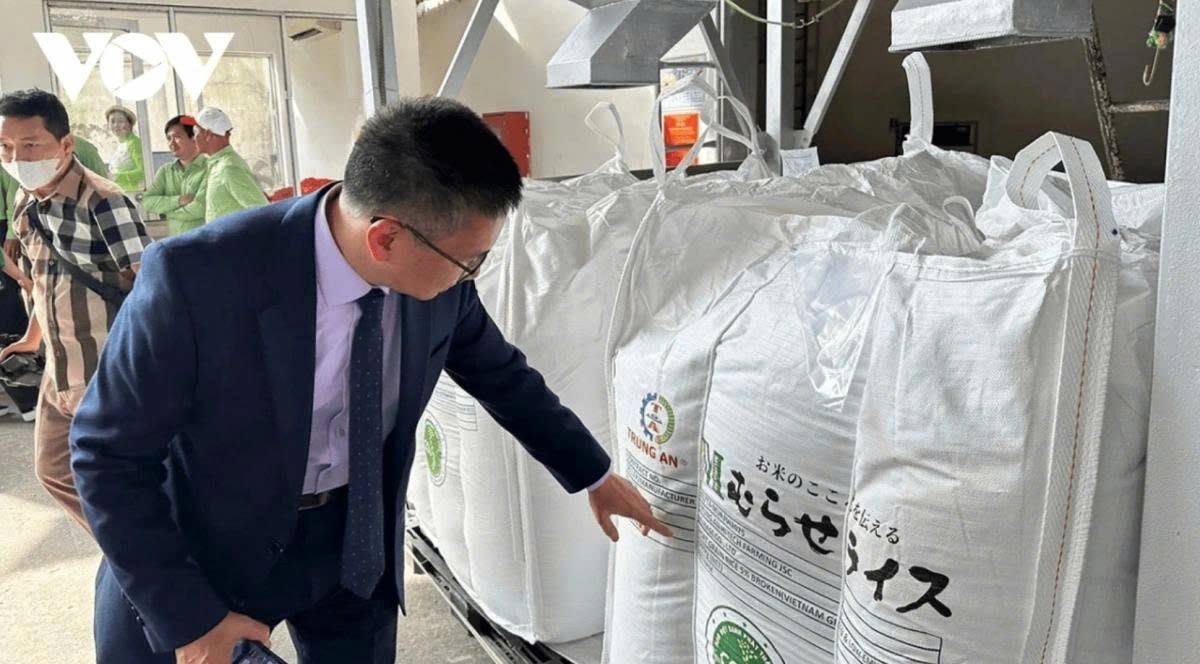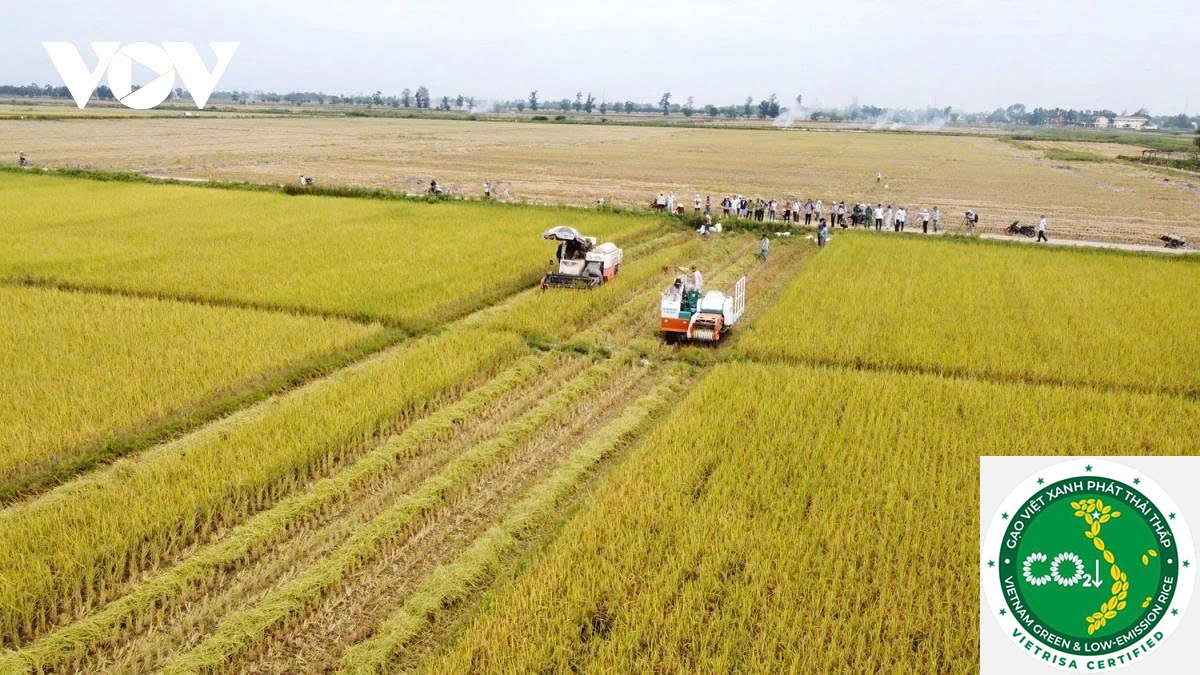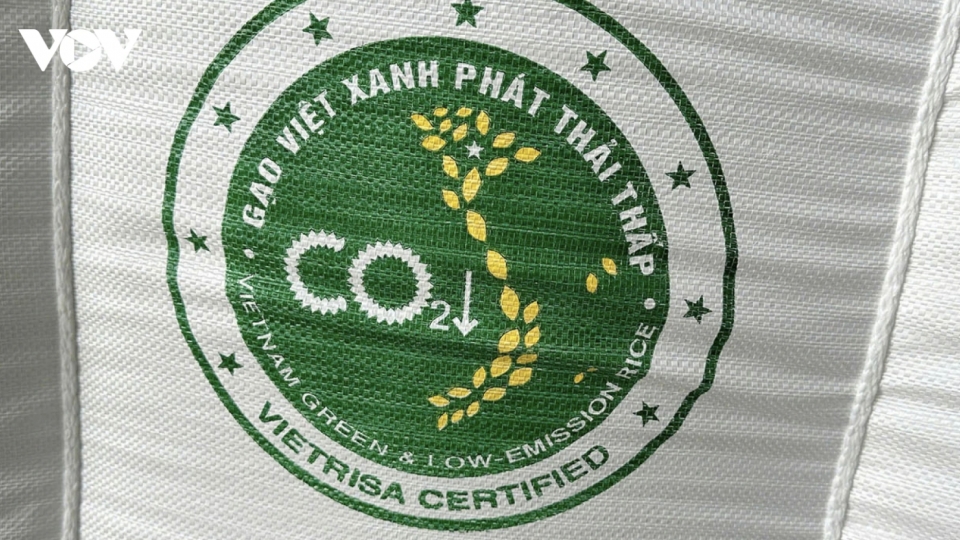Vietnam transforms rice industry as its low-emission rice gains global traction
VOV.VN - The recent successful establishment of the Vietnam Green & Low-Emission Rice brand not only helps elevate the value of Vietnamese rice but also meet the stringent requirements of international markets, offering lasting benefits for both businesses and rice growers.
A good sign for Vietnam’s low-emission rice export

A 500-tonne shipment of Vietnam’s green and low-emission rice has been successfully exported to Japan at a warehouse price of US$820 per tonne which is on par with Thailand’s premium Hom Mali rice and twice the price of Vietnamese fragrance rice currently sold overseas. This marks a major milestone for Trung An Hi-Tech Farming JSC, the exporter behind the shipment.
Pham Thai Binh, chairman of Trung An, shares that as Japan has high demand for sustainably grown rice, if rice cultivation follows the linkage model outlined in Vietnam’s One Million Hectare High Quality, Low Carbon Rice Project, its rice will gain increasing traction in major international markets. A second batch amounting 3,000 tonnes of certified low-emission ST25 rice is expected to be shipped to Australia by October 2025.
Deputy Minister of Agriculture and Environment Tran Thanh Nam hails the export as a direct result of Vietnam’s strategic shift toward sustainable agriculture and more efficient land use. So far, seven enterprises have been granted certification to use Vietnam’s Green – Low-Emission Rice brand, with over 19,000 tonnes of output in 2025.
The low-emission rice project is part of a broader government strategy to address climate change challenges, ensure national food security and increase the value of Vietnamese rice for export. It is marked by the launch of the “One Million Hectare High-Quality, Low Carbon Rice in the Mekong Delta by 2030” project under a decision signed by Prime Minister Pham Minh Chinh on November 27, 2023.
The Mekong Delta, which accounts for over 50% of Vietnam’s rice output, is central to this initiative. Facing threats from climate change, the region is being repositioned for sustainable, market-driven production.
Enhancing Vietnam’s global rice brand
Le Thanh Tung, standing vice chairman and secretary general of the Vietnam Rice Industry Association (VIETRISA), explains that Japan’s rice import system includes both government and private channels, with fierce competition from the United States, Thailand, China, and Australia. However, Vietnamese rice has steadily earned global consumer trust.
Deploying the One Million Hectare High Quality, Low Carbon Rice project will not only improve production capacity and supply chain efficiency but also enhance Vietnam’s competitive edge in the global market.
The phrase “low-emission rice” has become central to Vietnam’s green growth ambitions. The country is currently piloting a Measurement, Reporting, and Verification (MRV) system to quantify emissions and establish carbon credit markets, with mechanisms expected to be fully in place by 2028.
The low-emission rice label serves as a stepping stone toward a nationally recognised rice brand eligible for carbon credit trade. This branding effort meets Vietnam’s net-zero commitment by 2050 and will likely extend to other sectors, including forestry, aquaculture, and agriculture at large.
A strategic pivot for the future

Minister of Agriculture and Environment Do Duc Duy emphasises that the project’s early success highlights its viability and effectiveness, reflecting a major mindset shift among policymakers, businesses, and farmers toward sustainable rice value chains.
Major enterprises are already engaging in integrated supply chains, from seed selection and input provision to guaranteed product purchasing, laying the foundation for transparent and stable partnerships.
While the initial 500-tonne shipment represents a modest volume, its significance lies in how it demonstrates Vietnam’s adaptive capacity and strategic orientation toward premium markets amid global rice supply uncertainties, says Duy.
According to agricultural expert Hoang Trong Thuy, Vietnamese rice success is not just about fields, but also about timing, branding, and market intelligence. To date, Vietnamese rice has been exported to more than 150 countries and territories worldwide. Free trade agreements are also helping exporters tap into high-end markets like Japan, the European Union, and the United States.
With rising global demand for climate-smart agriculture, Vietnam’s commitment to quality, sustainability, and branding positions its rice industry for long-term international growth.





